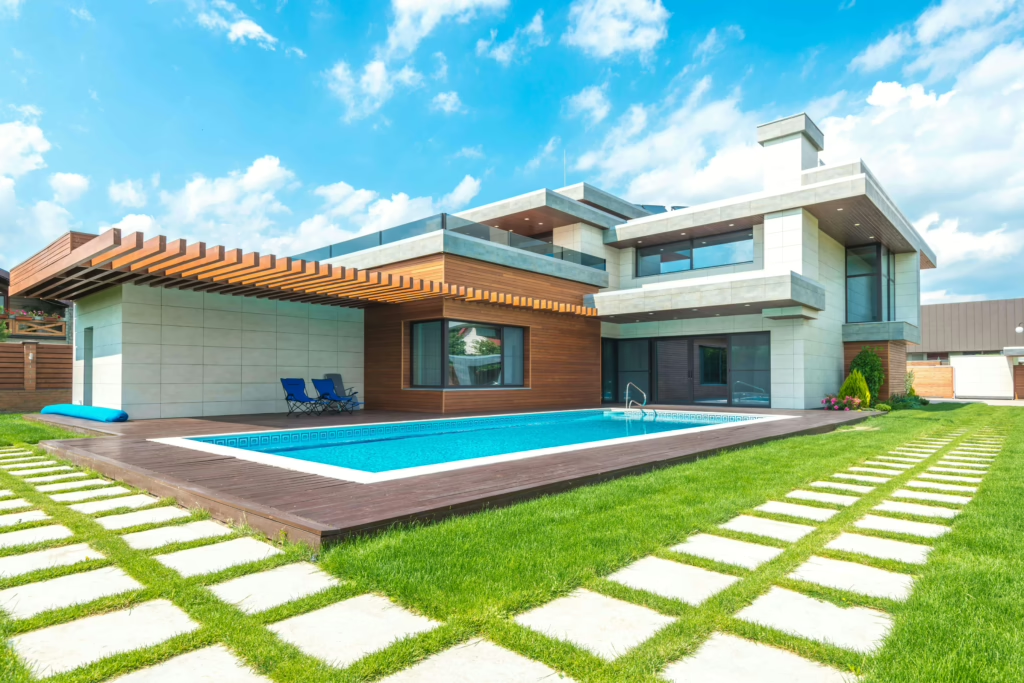Keeping your pool clean and algae-free is essential for a safe and enjoyable swimming experience. Algae not only make your pool appear uninviting but can also create health hazards and damage pool surfaces if left untreated. Understanding the various types of algae, their characteristics, and the most effective algae removal methods is crucial for pool owners who want to maintain a pristine swimming environment.
This guide will help you identify common types of algae, explore effective treatment options, and implement strategies to prevent future algae growth.
Overview of Common Pool Algae Types
1. Green Algae
- Characteristics: Green algae are the most common type found in swimming pools. They appear as slimy, green patches on walls and floors and can spread rapidly, especially under sunny conditions.
- Growth Conditions:
- High exposure to sunlight
- Insufficient chlorine levels
- Presence of organic debris like leaves or dirt
Removal Methods:
- Chlorine Shock: Use a chlorine shock to significantly raise chlorine levels and kill the algae.
- Brushing: Scrub affected areas with a stiff pool brush to remove algae from surfaces.
- Filtration: Run the filter continuously for 24 hours post-treatment to eliminate dead algae.
Prevention Tips:
- Maintain consistent chlorine levels.
- Promptly remove debris from the pool.
- Use algaecides regularly as a preventive measure.
2. Yellow Algae (Mustard Algae)
- Characteristics: Yellow algae, also known as mustard algae, clings to pool walls and floors. Its yellowish-brown hue is often mistaken for dirt, but it’s far more stubborn to eliminate.
- Growth Conditions:
- Warm water temperatures
- Poor circulation
- Low chlorine levels
Removal Methods:
- Brushing: Scrub walls, steps, and other surfaces thoroughly to dislodge algae.
- Double Chlorine Shock: Apply a heavy dose of chlorine to destroy the algae.
- Specialized Algaecides: Use products specifically designed to target mustard algae.
Prevention Tips:
- Ensure your filtration system operates efficiently.
- Clean the pool regularly and maintain balanced water chemistry.
3. Black Algae
- Characteristics: Black algae are the most challenging to eliminate. These appear as small, dark spots and have deep roots that can penetrate plaster and other porous surfaces.
- Growth Conditions:
- High pH levels
- Rough or porous pool surfaces
- Inadequate sanitizer levels
Removal Methods:
- Wire Brushing: Scrub aggressively with a wire brush to remove the algae’s protective layer.
- Chlorine Shock: Apply a strong chlorine shock treatment to kill remaining algae.
- Copper-Based Algaecide: Use a copper-based algaecide after brushing and shocking.
Prevention Tips:
- Regularly inspect and balance pH and chlorine levels.
- Consider resurfacing rough pool areas where algae can anchor.
4. Pink Algae
- Characteristics: Technically a bacteria, pink algae appear as slimy, pink films on walls, stairs, or pool equipment. They thrive in humid, damp areas of the pool.
- Growth Conditions:
- High humidity
- Poor water circulation
- Low chlorine levels
Removal Methods:
- Regular Cleaning: Scrub and clean all affected surfaces thoroughly.
- Shock Treatment: Use chlorine shock to eliminate the bacteria.
- Robotic Cleaners: Employ automatic pool cleaners to tackle hard-to-reach spots.
Prevention Tips:
- Keep water chemistry balanced.
- Ensure proper filtration and circulation.
Tips for Maintaining a Clean Pool
1. Test Water Weekly
Frequent water testing helps maintain proper chemical balance, ensuring that pH, chlorine, and alkalinity levels remain within ideal ranges.
2. Balance Pool Chemicals
Regularly adjust chemical levels to prevent algae growth. Keep the pH between 7.2-7.6 and chlorine levels at 1-3 ppm for optimal sanitization.
3. Clean Consistently
Establish a routine for skimming debris, vacuuming the floor, and brushing pool walls. Removing organic matter deprives algae of nutrients, reducing the risk of blooms.
4. Maintain Filtration
Run your pool’s filtration system for 8-12 hours daily to keep water circulating. Clean or replace filters regularly to ensure peak performance.
5. Use Preventive Algaecides
Adding algaecides can help prevent algae from taking hold, particularly during warmer months when growth is more likely.
FAQs: Algae in Pools
1. What causes algae growth in pools?
Algae thrive in pools with unbalanced chemicals, poor circulation, warm temperatures, and organic debris.
2. How do I remove algae from my pool?
Start by brushing affected areas, then shock the pool with chlorine. Follow with an algaecide treatment and continuous filtration.
3. Is it safe to swim in a pool with algae?
Swimming in an algae-infested pool isn’t recommended. Algae can make surfaces slippery and may harbor bacteria.
4. How can I prevent algae from returning?
Regular cleaning, balanced water chemistry, and using preventive algaecides can keep algae at bay.
5. What’s the best algae treatment for pools?
Green algae respond well to chlorine shock, while black and yellow algae often require specialized algaecides.
Final Thoughts
Algae are a common challenge for pool owners, but with the right knowledge and tools, you can effectively treat and prevent them. Regular maintenance, consistent cleaning, and proper chemical balance are key to keeping your pool algae-free.
If you’re struggling with stubborn algae, consider reaching out to a professional service like PoolLogic San Diego for expert assistance. With professional algae removal guidance, your pool can remain a sparkling, safe haven all year round.



